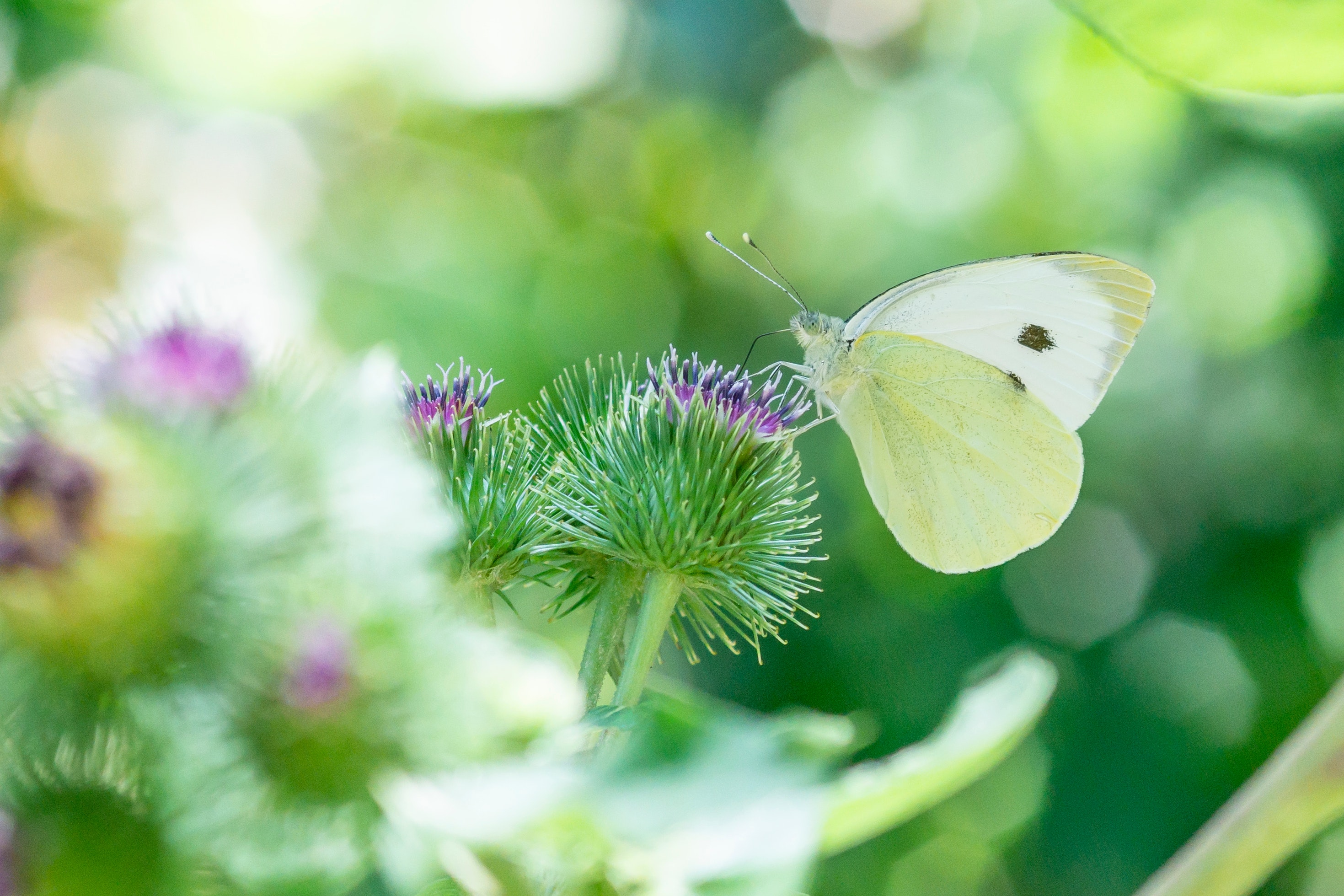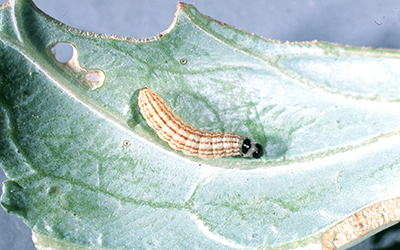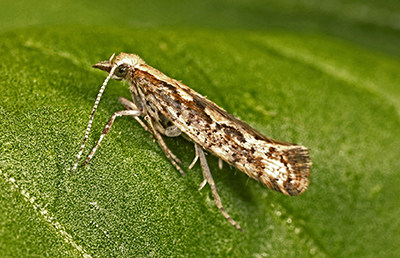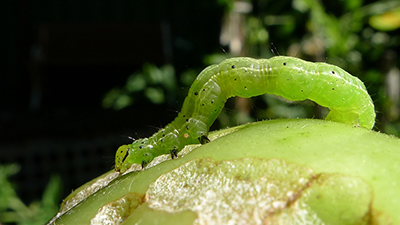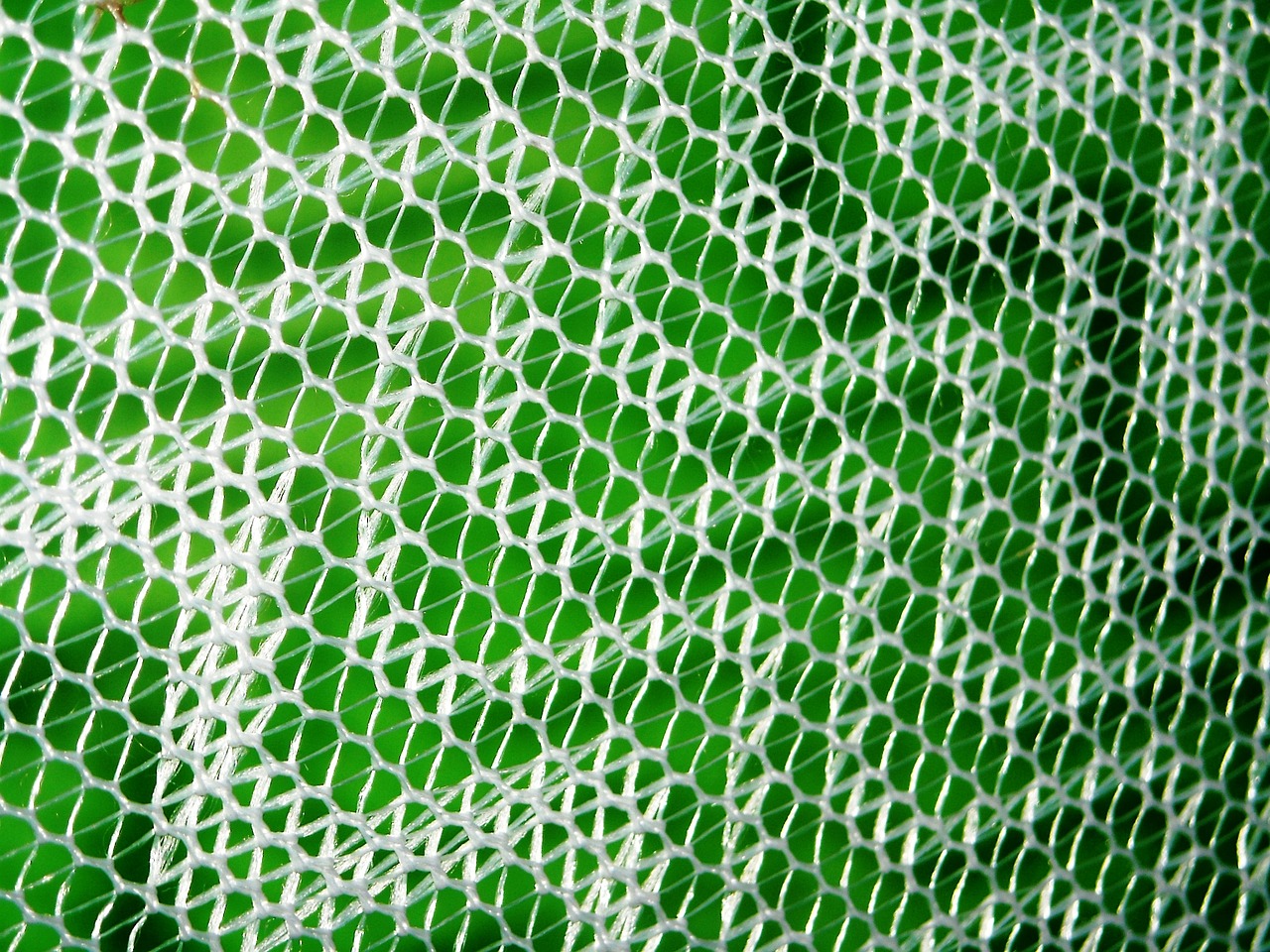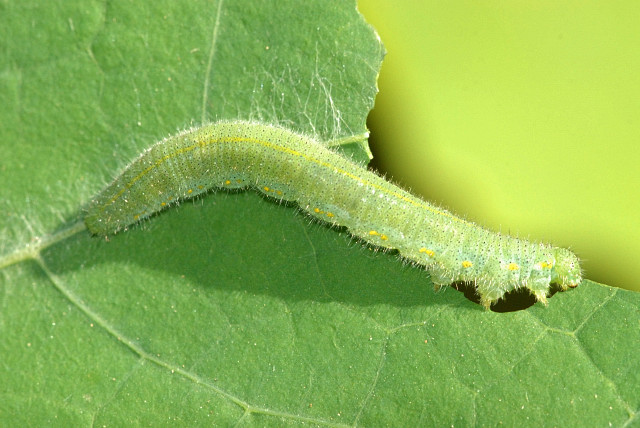
If you’re growing cole family vegetables, such as kohlrabi, broccoli, cauliflower, turnips, or kale, you should know how to identify and eliminate cabbage worms. Although most of them turn into cute little harmless moths, as caterpillars (or larva), they can devastate your garden.
The term cabbage worm applies to a number of caterpillar or worm-like critters, although they aren’t technically considered worms. Most of them feed on the leaves of fall vegetables like those listed above, along with mustard greens, Brussels sprouts, and rutabagas. And although you may not like to kill any of the wildlife in your garden, when they’re robbing you of your harvest, it may be time to take action.
Types of Cabbage Worms
In North America, you’ll find one of the four primary types of insects whose larval form feed on your cruciferous vegetables.
Photo by mali maeder from Pexels
Garden White butterflies
Called “garden whites,” of the Pieris genus, you’ll see several types and sizes of these butterflies.
The “small white” (Pieris rapae) gets into everything with no specific territory. Its caterpillar is bright green with short, light fuzz and favors cabbage, cauliflower, and broccoli. Often called the “small cabbage white,” these are the most widespread and common garden enemies in the US. Its introduction to the country was an accident, and it has spread into several other former UK colonies, including Canada and Australia. For that reason, you’ll sometimes see it called the “imported cabbageworm.” You’ll soon discover these are known as the most serious threat to both home gardeners and commercial growers alike.
Wingspans for the adult butterfly range from 1 to 1.75 inches, and its wings are a yellowish white or cream color. You’ll find it in well-irrigated and moist climates, but rarely in frigid regions.
The small white lays her eggs singly on the bottoms of plant leaves. You’ll be able to identify them by their yellow color, ovoid shape, and the ridges that run from the top to the bottom.
This cabbage worm is a champion when it comes to camouflage. The caterpillars are blue-green, with black rings and yellow markings, and they hide underneath plant leaves. Their chrysalis is light brown, which also makes them difficult to eradicate. They’ll host on any member of the cabbage family, wild or cultivated. A female small white can produce thousands of offspring during her short lifetime, which makes them even more threatening.
You may also see a slightly larger white butterfly, called a “large white,” Pieris brassicae, which is an older version of this butterfly from Europe. They’re often called “cabbage butterflies” or “cabbage whites.” Their eggs are pale yellow in color, which they lay in small groups on the underside of leaves. As they ready to hatch, the eggs become transparent.
The caterpillars are light yellow and have brown heads. They also appear to be covered in hair. As they grow, they become darker yellow, covered with black dots. They also become quite hungry and have no qualms about wiping out your vegetable garden.
Southern gardeners may see the Southern cabbage butterfly (Pieris protodice). This pretty butterfly ranges mainly throughout the southern US and northern Mexico. The butterflies only have a wingspan of about 1.2 to 1.7 inches, so they may be hard to see. The eggs are orange, while the caterpillar is blue-green to gray with yellow stripes.
These pests prefer mustard greens, broccoli, Brussels sprouts, cabbage, cauliflower, and radishes, so if you live in the southern states, keep your eyes out for them on your fall vegetable garden. They can also overwinter easily inside their chrysalis, so vigilance is warranted in early spring when prepping your vegetable beds for spring planting.
The green-veined garden white (Pieris napi) is common to North America and Europe. You’ll mainly find it near parks and meadows in the wild. They lay single eggs on mustard greens and cabbage. You likely won’t find these in your garden, but they occasionally infest rural gardens.
Cabbage webworm
Another type of insect commonly called a cabbage worm is the cabbage webworm (Hellula undalis), and although it’s native to Southern Europe, its relative, Hellula rogatalis, is found it in Gulf states gardens and even as far northeast as Maryland and New York. With light brown wings that measure from 0.6 to 0.8 inches, they’re challenging to see and identify. You will find them between March to October throughout the US.
Their larvae also enjoy cabbage plants, including cauliflower, kale, rutabaga, horseradish, and more. The name “webworm” refers to the silken web they weave to protect themselves while eating your vegetables. The web also helps to form the pupa into a loose cocoon for them to morph.
Diamondback moth
Although not a Pieris genus butterfly or a “garden white,” Diamondback moths (Plutella xylostella) produce a smooth, solid green caterpillar that mines leaves and makes holes in them when eating the plant. And they target cabbages.
The moths are about 0.5 inch wingspan with brownish gray wings and a diamond-like pattern on its back. These moths are considered twice as threatening, since both the moth and its larvae feast on cabbages, which is their preferred host plant. Worst of all, they’ve become resistant to many of the pesticides over the years.
The eggs are oval and light yellow or green, then turn darker as they mature. You’ll find them laid singly or in groups. The larvae start out rather colorless and then develop distinctive black heads with green bodies.
Cabbage Looper
Cabbage loopers (Trichoplusia ni) are the larvae of a nocturnal moth and called a “looper” because it loops it’s body when crawling like an inchworm. These loopers will infest many of your garden plants, including your tomatoes and cucumbers, and are particularly voracious.
Cabbage loopers look and behave very similarly to cabbage worms. However, they aren’t related species. But since many people confuse the two, and solutions for eradicating both are also similar, we thought we’d discuss them here as well.
Cabbage Worms and Plant damage
While your garden vegetables can tolerate a small amount of leaf loss, cabbage worms cause the most damage when heads are forming on your cabbages and broccoli plants. They will also completely obliterate seedlings before they’ve even had a chance to become established.
The most common type of cabbage worms that gardeners find is the Pieris genus butterfly variety, or the “garden whites.” And although they look pretty flitting about your garden, their larvae will strip the leaves on your plants and leave nothing but the stems.
Cabbage loopers and Diamondback moths follow in frequency for most gardeners. And those in the south may find cabbage webworm.
Finding Cabbage Worms
You should inspect your plants regularly, including the undersides of the leaves undersides and stems. If you have good eyesight, you may even find eggs or feces from the worms.
If you see one of these garden white butterflies or diamondback moths, inspect your plants immediately and then daily for a few days to identify any eggs or larvae so you can remove them by hand. The eggs will hatch in four to eight days, depending on the temperatures, so stay vigilant throughout this time.
After hatching, they’ll feast on your garden plants for a week or two until creating a chrysalis. The cocoons hatch in about a week when the weather is warm. And some may even stay dormant inside their chrysalis until the next spring if they’re in the ground.
How to get Rid of Cabbage Worms
Once you’ve identified the foe, you can take a number of actions to eradicate them from your garden. Some gardeners remove them manually, picking off the caterpillars and the eggs by hand. Others use bacterial or chemical pesticides, while others work to prevent them from entering the garden.
Natural ways to prevent cabbage worms
The best way to get rid of cabbage worms is not to have any to deal with in the first place. You can leverage natural processes to prevent them, and here are just a few.
1
Make sure you till your garden soil several times between plantings to destroy the pupae, which overwinter in the ground.
2
Plant herbs and flowers that repel them, such as garlic, thyme, onions, sage, marigolds, nasturtium, and rosemary.
3
Yellow jackets and wasps feed on cabbage worms, so don’t be too hasty to remove them or their nests.
4
Remove damaged plants quickly to ensure that any visitors go with them.
5
Mix up a batch of natural repellent from spearmint, garlic, horseradish, hot peppers, and green onion. A a tablespoon of liquid dish soap to every quart of liquid and spray on your plants.
6
Citrus repellent often works to repel caterpillars because of its bitterness. Grind up the rinds of any citrus fruits and soak overnight. Strain the liquid and add a few tablespoons of dish soap to make a spray for your cabbages.
7
If you keep chickens, let them run free in your garden patch. However, wait until your cabbages grow large enough to withstand the onslaught. Chickens love cabbage worms, and will happily pick them off by hand for you.
Barrier deterrents
Some gardeners use barriers to prevent cabbage worms from infesting their garden vegetables. They may block the moths and butterflies from landing on the plants or just on the cabbage heads:
Cover your cabbages with a lightweight nylon netting to prevent moths and butterflies from landing on them and laying their eggs. This is a preventative measure you should take before you have any caterpillars, since the net will also prevent wasps and birds from eating them.
Row covers also prevent moths and butterflies from landing on your cabbages and other pest from eating at your winter vegetables. Another benefit to these is they also protect your plants from freezes by insulating them and retaining heat. In this way, row covers also extend your growing season.
You can also include plants that distract the garden whites or other insects from your cabbages. For example, Diamondback moths become attracted to wintercress and lay their eggs on these plants instead of cabbages. However, their larvae don’t survive when laid on this plant due to saponins.
How to Eradicate Cabbage Worms
Despite your best efforts, you found cabbage worms on your broccoli and cabbages. What now? Once you have them, you may need to step up your efforts to get rid of them completely.
Bacillus Thuringiensis
Bacillus Thuringiensis (Bt) is a natural pesticide derived from a soil-borne bacteria. Gardeners and farmers have been using it since the 1950s, and there are now several varieties to work with. Bacillus thuringiensis var kurstaki is the variety recommend for cabbage worms. It works best when applied when the caterpillars are still small. They need to eat it, so spraying the cabbage leaves is the recommended method. You’ll find several brands of this pesticide on the market.
It’s harmless to humans, animals, and beneficial insects as well. It also degrades quickly in sunlight, so you may need to apply it several times to a badly infested garden. You should also spray it late in the day to keep it from breaking down too quickly in bright sunlight.
Most experts consider it the best choice because its safe for bees and ladybugs, and recommend use early in the growing season. But, note that Diamondback moths may have become resistant to Bt, so one of the following pesticides might be better to treat for these insects.
Spinosad
Spinosad is another bacterial pesticide, and this one combines two separate chemicals to kill leaf miners and other pests, including mosquitoes and ants. Developed in 1997, spinosad and is widely available for purchase. It affects the insects’ nervous systems and kills within two days.
Spinosad has low toxicity for people, pets, and other mammals, although you should still avoid breathing, touching, or consuming it. The Organic Materials Review Institute approved Spinosad as an organic pesticide. Experts recommend this for late season eradication when the caterpillars are older. Unfortunately, it also harms beneficial insects, so gardeners should use it sparingly.
Neem oil
Neem oil also works against cabbage worms by destroying the eggs and making the plants unpalatable. While it doesn’t kill the butterflies and moths or even the cabbage worms, it does destroy the eggs if well spray. It also tastes bad, so they may not be as likely to chow down on your cabbages. Neem oil is relatively safe for beneficial insects, but you can spray it in the evening when bees and butterflies aren’t out patrolling just to be sure.
Diatomaceous earth
If pesticides aren’t destructive enough, try Diatomaceous earth. Diatomaceous earth is made up from the fossils of small aquatic creatures called diatoms. With skeletons made of silica, these fossils now make a crumbly kind of dirt that many use as a safer alternative to pesticides.
It’s not a pesticide or a poison, but its structure basically shreds insect and dehydrates them. So, if you really hate your cabbage worms, sprinkling diatomaceous earth on and around the bases of your plants will kill them, along with other crawling pests.
Getting Rid of Cabbage Worms Before Cooking
You may not even want to entertain the possibility, but many gardeners find these pests in their cabbages and broccoli heads after harvesting. Reports of horrified children who watched cabbage worms emerge from their home-grown vegetables could scar some gardeners for life. Some people might not mind the extra protein, and eating a cabbage worm probably won’t hurt you. However, most fastidious people would prefer to remove them before eating their vegetables.
To remove them from broccoli, cut into spears and soak them in very warm water with 1/4-cup salt and 2 tablespoons of vinegar. If necessary, weight them down in the sink or bowl so the entire stalk stays fully submerged. You should soak them for at least 20 minutes and can continue up to an hour just to be safe.
For cabbage, peel the outer layers of leaves and then cut the head into quarters to examine the inside for any signs of insect. Perform the same salt water and vinegar soak, just in case.
After soaking, rinse thoroughly with cold water and then cook or store as desired.
Watch Out for Cabbage Worms
Cabbage worms can wreak havoc on your garden, making all your hard work seem futile. Nothing disappoints like tilling, digging, and nurturing seedlings, only to provide the local wildlife with a free lunch. Just a few precautions like using row covers and planting deterents nearby can help protect your harvest.
And luckily, you now know all the signs to look for to take action. Once identified, you’ll find a dozen ways to eradicate them should they invade your cabbage patch. Whether you choose chickens, neem oil, or a bacterial pesticide, you’ll be able to enjoy the fruits of your labor and the vegetables of your garden without having to share with local insects.

